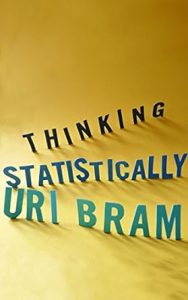
# Key Takeaways:
– The importance of understanding and using statistics in decision making
– The difference between descriptive and inferential statistics
– The role of probability in statistical analysis
– The concept of sampling and its impact on data analysis
– The importance of considering bias and confounding variables in data interpretation
– The use of hypothesis testing to make informed decisions
– The limitations of statistical analysis and the need for critical thinking
# Practical Applications:
– Using statistical analysis to make data-driven decisions in business and management
– Conducting market research and analyzing customer data to inform marketing strategies
– Using A/B testing to evaluate the effectiveness of different strategies or products
– Understanding and interpreting data in financial analysis and forecasting
– Identifying and addressing potential biases in data collection and analysis
– Using statistical tools to evaluate the success of a project or initiative
# Valuable Insights for Leaders and Managers:
– Chapter 1: “Why Statistics Matter”
– highlights the importance of using statistics in decision making and the potential consequences of ignoring data
– Chapter 4: “Probability: The Language of Uncertainty”
– provides a foundation for understanding probability and its role in statistical analysis
– Chapter 6: “Hypothesis Testing: Drawing Conclusions from Data”
– offers a practical approach to using hypothesis testing to make informed decisions
– Chapter 8: “The Limits of Statistical Analysis”
– reminds leaders and managers to critically evaluate data and consider potential limitations and biases
# Case Studies and Examples:
– The use of statistical analysis in sports to evaluate player performance and inform team strategies
– The impact of biased data in the medical field, such as in drug trials or disease diagnosis
– The use of A/B testing in marketing campaigns to determine the most effective messaging or design
– The role of statistics in predicting and managing risk in financial investments
– The use of statistical analysis in political polling and its potential impact on election outcomes.
Leave a Reply